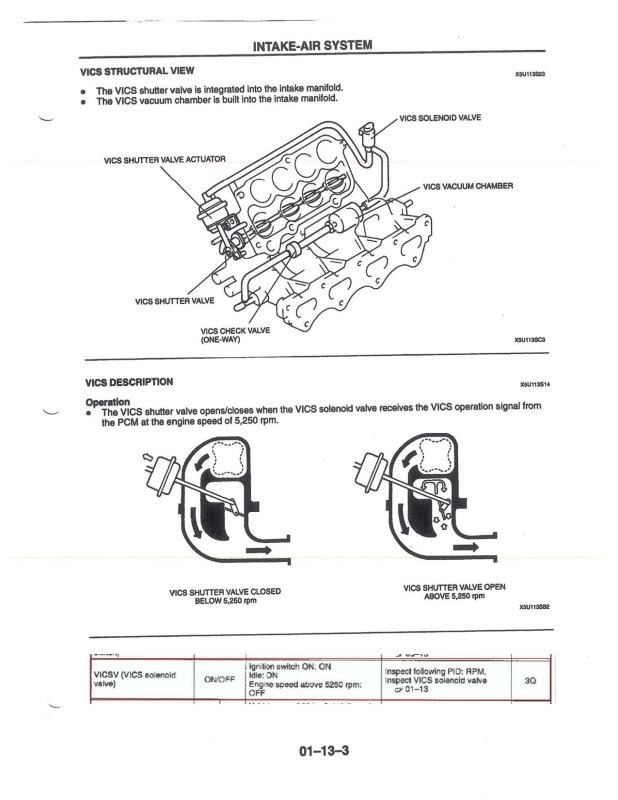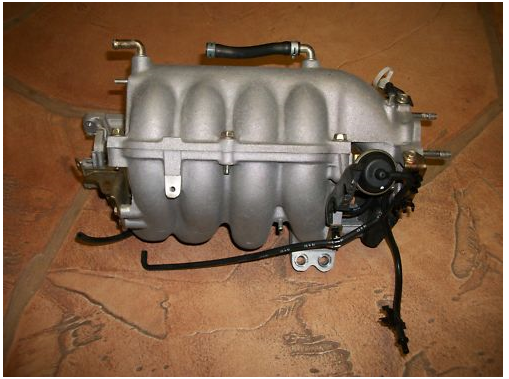VICS operation
#1
I have a 95 car .. now with a 99 engine.
I don't see where or what to connect the RPM switch to.
I have identified the butterfly actuator .. which I assume is linked to VICS .. but i don't see any plugs or wires or anything to connect the RPM switch to .. what am i missing or not seeing?
more on the VICS .. since i have a turbo system on my car. is the VICS RPM switch actually even needed? If i understand it correctly, the purpose of the RPM switch is to keep the butterflies closed normally, then open them at a predetermined RPM (people say around 5200-5600). With this process in mind .. if i connected a vacuum hose to the butterfly actuator .. wouldn't it keep the butterflies closed during vacuum and open under boost .. which is essentially what i need?
I don't see where or what to connect the RPM switch to.
I have identified the butterfly actuator .. which I assume is linked to VICS .. but i don't see any plugs or wires or anything to connect the RPM switch to .. what am i missing or not seeing?
more on the VICS .. since i have a turbo system on my car. is the VICS RPM switch actually even needed? If i understand it correctly, the purpose of the RPM switch is to keep the butterflies closed normally, then open them at a predetermined RPM (people say around 5200-5600). With this process in mind .. if i connected a vacuum hose to the butterfly actuator .. wouldn't it keep the butterflies closed during vacuum and open under boost .. which is essentially what i need?
Last edited by minileprechaun; 04-20-2011 at 11:35 AM. Reason: changed "VCIS" to "VICS"
#2
You're missing the vacuum solenoid.
The 99 has a vacuum reservoir in the manifold itself. It is fed from the plenum via a hose with a check valve. In the 99 motor this check valve is green and white, and is hidden from view. Between the vacuum reservoir and the actuator, will be your solenoid.
The 99 has a vacuum reservoir in the manifold itself. It is fed from the plenum via a hose with a check valve. In the 99 motor this check valve is green and white, and is hidden from view. Between the vacuum reservoir and the actuator, will be your solenoid.
#3
You're missing the vacuum solenoid.
The 99 has a vacuum reservoir in the manifold itself. It is fed from the plenum via a hose with a check valve. In the 99 motor this check valve is green and white, and is hidden from view. Between the vacuum reservoir and the actuator, will be your solenoid.
The 99 has a vacuum reservoir in the manifold itself. It is fed from the plenum via a hose with a check valve. In the 99 motor this check valve is green and white, and is hidden from view. Between the vacuum reservoir and the actuator, will be your solenoid.
i also see the green and white check valve. on the throttle body side of the check valve, there's a T connection - one side goes to the check valve, the other is open. is this the end that is supposed to connect to the vacuum solenoid? the other side of the check valve doesn't appear to have a free vacuum line. Is that T connection a special vacuum line, or a line just like any other on the intake manifold?
#4
I have a 95 car .. now with a 99 engine.
I don't see where or what to connect the RPM switch to.
I have identified the butterfly actuator .. which I assume is linked to VCIS .. but i don't see any plugs or wires or anything to connect the RPM switch to .. what am i missing or not seeing?
more on the VCIS .. since i have a turbo system on my car. is the VCIS RPM switch actually even needed? If i understand it correctly, the purpose of the RPM switch is to keep the butterflies closed normally, then open them at a predetermined RPM (people say around 5200-5600). With this process in mind .. if i connected a vacuum hose to the butterfly actuator .. wouldn't it keep the butterflies closed during vacuum and open under boost .. which is essentially what i need?
I don't see where or what to connect the RPM switch to.
I have identified the butterfly actuator .. which I assume is linked to VCIS .. but i don't see any plugs or wires or anything to connect the RPM switch to .. what am i missing or not seeing?
more on the VCIS .. since i have a turbo system on my car. is the VCIS RPM switch actually even needed? If i understand it correctly, the purpose of the RPM switch is to keep the butterflies closed normally, then open them at a predetermined RPM (people say around 5200-5600). With this process in mind .. if i connected a vacuum hose to the butterfly actuator .. wouldn't it keep the butterflies closed during vacuum and open under boost .. which is essentially what i need?
#10
I wonder how much vacuum the canister can store to allow the butterflies to close going above and below 5200 numerous times without pulling more vacuum. I assume the solenoid purges the vacuum stored between it and the actuator...then sources vacuum from the canister when it drops back below 5200.
#13
on another note .. the purpose of a check valve on a vacuum line is to prevent boosted pressure from passing, correct?
#16
now i'm going to feel like an idiot here ...
but looking at the picture that brain posted and at my intake manifold.. i'm not exactly sure which line is the VICS chamber exit line. i see the check valve and the line entering the VICS chamber on the frontside of the chamber, but on the backside of the chamber, there is no line coming directly out. i see two lines, one at the top of the intake manifold, which looks like it's too far away from the chamber, as it's high up... and the second line i see is coming off the bottom, by the rear. the picture looks like there should be a line out the rear directly behind the VICS chamber .. but i don't see this. is the VICS chamber exit line actually the one coming off the bottom??
but looking at the picture that brain posted and at my intake manifold.. i'm not exactly sure which line is the VICS chamber exit line. i see the check valve and the line entering the VICS chamber on the frontside of the chamber, but on the backside of the chamber, there is no line coming directly out. i see two lines, one at the top of the intake manifold, which looks like it's too far away from the chamber, as it's high up... and the second line i see is coming off the bottom, by the rear. the picture looks like there should be a line out the rear directly behind the VICS chamber .. but i don't see this. is the VICS chamber exit line actually the one coming off the bottom??
















